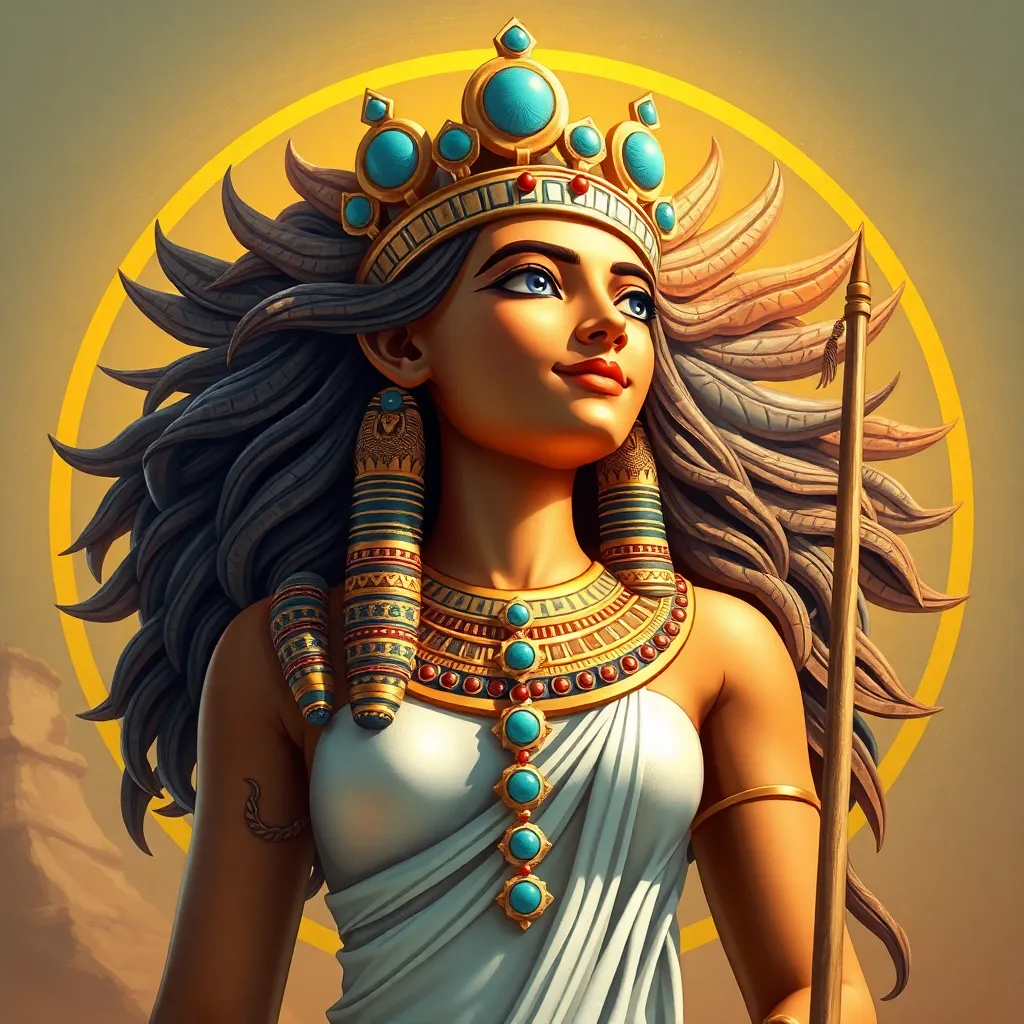The Role of the Goddess Hathor: Love and Joy in the Cosmos
I. Introduction
In the pantheon of ancient Egyptian mythology, Hathor stands out as a multifaceted goddess, embodying the principles of love, joy, and motherhood. Revered in various forms throughout Egypt’s long history, she was integral to both the spiritual and everyday lives of the ancient Egyptians. This article aims to explore Hathor’s significant role in the cosmos, highlighting her connections to the themes of love and joy that resonate through her mythology and cultural practices.
II. Historical Context of Hathor
Hathor’s worship can be traced back to the early dynastic period of Egypt, where she was initially associated with the sky and later evolved into a goddess of love and fertility. Her name, which can be translated as “House of Horus,” signifies her connection to the divine but also reflects her nurturing qualities.
Key attributes and symbols associated with Hathor include:
- The cow: Symbolizing motherhood and nourishment.
- The sistrum: A musical instrument representing joy and festivity.
- By her association with beauty and femininity, she is often depicted as a woman with cow’s ears or horns, emphasizing her nurturing and maternal aspects.
Geographically, Hathor’s cult spread across Egypt, with significant centers of worship in Dendera and Thebes. This widespread reverence highlights her importance in ancient Egyptian society.
III. Hathor as the Goddess of Love
Hathor’s role as the goddess of love is vividly depicted in various myths and iconographies. She is often shown in scenes of affection, celebrating the beauty of romantic relationships. Her association with fertility links her closely to the cycles of nature and human reproduction.
In addition to romantic love, Hathor represents:
- Sexuality: As a patroness of lovers, she was invoked for matters of the heart.
- Motherhood: With her nurturing spirit, she is seen as a protector of mothers and children.
Rituals and celebrations in honor of Hathor often included:
- Festivals dedicated to love and fertility, such as the beautiful Dendera festival.
- Offerings of music and dance to invoke her blessings on relationships.
IV. Hathor as the Goddess of Joy
Joy was a vital component of ancient Egyptian culture, and Hathor perfectly encapsulates this theme. She is frequently depicted in joyous celebrations, engaging in music and dance, which were essential aspects of worship and community bonding.
Hathor’s embodiment of joy is significant in the following ways:
- Music and Dance: Hathor is associated with various musical instruments, especially the sistrum, and is often depicted dancing.
- Festivities: Many festivals dedicated to her were occasions of communal joy, where people came together to celebrate life and love.
The role of joy in spiritual practice cannot be understated; it fostered a sense of community and connection among worshippers, allowing them to express their happiness and gratitude towards the divine.
V. Hathor’s Influence on Other Deities
Hathor’s relationships with other gods and goddesses were complex and significant. She is often associated with Ra, the sun god, and is sometimes depicted as his consort. Additionally, she is the mother of Horus, the god of kingship and the sky, further solidifying her importance within the pantheon.
Her traits and attributes influenced many other deities, leading to cross-cultural adaptations. For example:
- In later mythologies, aspects of her character can be seen in goddesses associated with love and beauty, such as Aphrodite in Greek mythology.
- Her nurturing qualities have echoed through various cultural representations of motherhood across civilizations.
The legacy of Hathor’s attributes continues to be felt, influencing modern interpretations of love and joy in spirituality.
VI. Hathor’s Connection to the Cosmos
Hathor is not only a goddess of love and joy but also has profound connections to the cosmos. She was believed to be associated with celestial bodies and cosmic order, reflecting the harmony of the universe.
Mythological narratives link Hathor to the stars, particularly the Milky Way, which was sometimes referred to as the “Path of Hathor.” The symbolism of cosmic love and joy can be seen in:
- Her representation as a celestial cow who nourishes the sun god Ra, signifying the life-giving aspects of the cosmos.
- Myths that position her as a guiding force for souls in the afterlife, emphasizing her nurturing and loving nature beyond the earthly realm.
VII. Modern Interpretations and Revivals
In contemporary times, there has been a resurgence of interest in Hathor and her themes of love and joy. Many modern spiritual practices draw inspiration from her teachings, emphasizing the importance of love in personal and communal contexts.
Hathor’s representation in art, literature, and popular culture is evident in various forms:
- Artworks depicting her in classical and modern styles.
- Literary references in poetry and fiction that explore themes of love and joy.
- Modern films and media that reinterpret her character and attributes.
The relevance of Hathor’s teachings in today’s world reminds us of the enduring nature of love and joy, encouraging individuals to embrace these qualities in their daily lives.
VIII. Conclusion
Hathor’s legacy as a goddess of love and joy is profound and enduring. Her multifaceted character not only shaped ancient Egyptian spirituality but continues to inspire individuals today. The themes of love and joy are universal, transcending time and culture, and serve as a reminder of the importance of these qualities in both ancient and modern contexts.
Embracing the essence of Hathor in our everyday lives can lead to deeper connections with ourselves and others, fostering a sense of joy that resonates through the cosmos.




